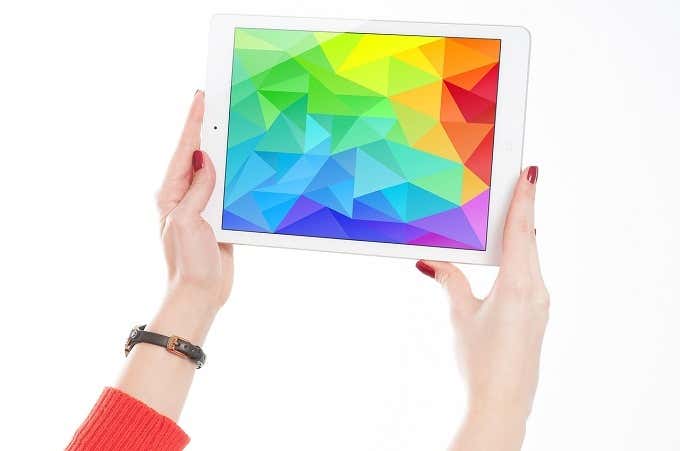The year 2019 is going to be an important one for iOS users. It’s the year that iOS transforms into something significantly different. Until now, all Apple devices that aren’t Macs have shared the same operating system. Whether you had an Apple TV, iPad, or iPhone, it used iOS.
While all three devices will still use the same core operating system, each device will now receive a specialized fork of iOS. That means iPad users aren’t waiting on iOS 13, but on a new operating system, a variant officially known as iPadOS.

This special focus on each device’s unique needs and strengths is big news for current and prospective owners of iPad devices new enough to receive the update. Which features are the headliners? Well, that depends on how you use your iPad, but the features highlighted here are the ones likely to make the most difference to most users.
A Reworked Tablet Interface
The iPad and iPhone have been diverging in terms of interface design and looks for years. However, even with iOS12 the fundamental look and feel of the OS have been the same. Not so for iPadOS.
Apple is recognizing that the large, high-resolution screen is being wasted with smartphone conventions. iPadOS is rejigging the entire way that screen real estate is used. Everything is being scaled properly and icon grids are tighter, so you can fit more stuff on the screen at once, without it looking cluttered.
These improvements extend to how you interface with the UI as well. The on-screen keyboard can now be moved around and resized. Text selection and editing are getting major updates as well, so expect your iPad to be closer to a “real” computer in terms of productivity.
True Multitasking!

One of the biggest issues holding the iPad back from being a laptop replacement is its multitasking abilities. Recent iOS versions have brought split-screen support to the device, which allows you to run supporting apps side-by-side.
This was a major boost for serious work since you could now have a word processor and web browser open at the same time, to mention one example.
This solution was relatively inflexible but with iPadOS, we’re getting the real-deal multitasking iOS tablet users have been begging for. Multiple apps can be kept off-screen with the upgrade Slide Over feature. You can simply swipe up to see all apps waiting in the wings. Opening, closing, and maximizing these apps are now easy to do as well.
App windows are here as well and best of all, you can have two windows of the same app open. No longer will you have to run two web browsers or two different word processors just to approximate this function.
Mouse Support Is Finally Here

Android devices have had mouse support for ages, but iOS devices have remained staunchly touch-only, despite excellent keyboard options being available.
The feature is currently part of the AssistiveTouch accessibility settings, but of course, anyone can take advantage of it. Both Bluetooth and USB devices are supported.
We have no idea how well a mouse will work since it’s probably based on emulated touch, but if it works well it could seriously bolster the iPad as a laptop replacement option.
External Storage Support

One of the coolest features on Android is the ability to connect just about any USB storage device and immediately access the files onboard. That’s been notoriously hard to do on iOS without explicit support for it.
With iPadOS you’ll now have the ability to connect USB thumb drives, hard drives, and SD cards directly to the tablet. You’ll need the right connectors of course, but other than that you can get to the files directly.
Speaking of getting to files…
A Grown-Up File System

iOS 12 finally brought a real, user-facing file system to iOS. It’s been wonderfully empowering to have full control of file storage, but the file explorer software and integration are clearly in their early stages. With iPadOS we are getting big improvements to file handling on iPad and it could not come a moment sooner.
Taking advantage of the bigger screen, you can now browse files in nested folders, with proper file previews as well. There’s a downloads folder, so you never have to wonder where your downloads have gone and you can now zip or unzip files on the iPad itself.
Native Xbox One & PS4 Controller Support

Apple has always had the better offering when it game to game controllers. Their MFi controller standard was well adopted and all iOS apps that supported gamepads worked with any MFi controller. Unfortunately, the controllers themselves tended to be rather poor quality, while also being pretty expensive.
Now, iPadOS, TVOS, and iPhoneOS are getting native support for the Playstation Dualshock 4 and Xbox One controller with Bluetooth. Unfortunately, the older non-Bluetooth Xbox One controllers won’t work.
This means playing the many wonderful ports and AAA games on iPad with a proper controller. Best of all, the game streaming apps that populate the App store will not be just as comfortable to control as the big-boy platforms. Make no mistake, this is a big deal.
Everything Is Different Now
After September 2019 it’s no exaggeration to say that our iPads will be completely new machines. Far more capable work and play tools.
Adventurous users can try the Beta version of iPadOS right now, although we don’t recommend you do that on a mission-critical device.